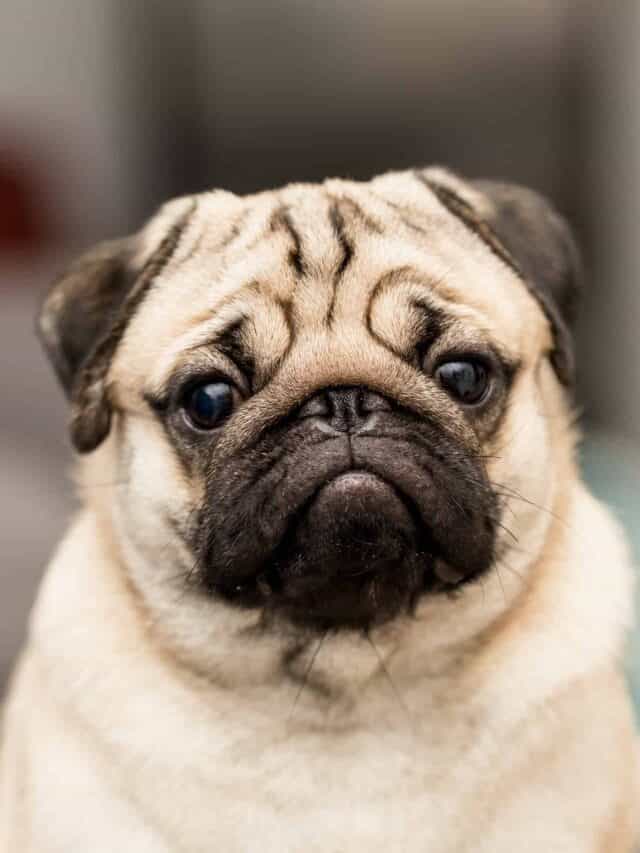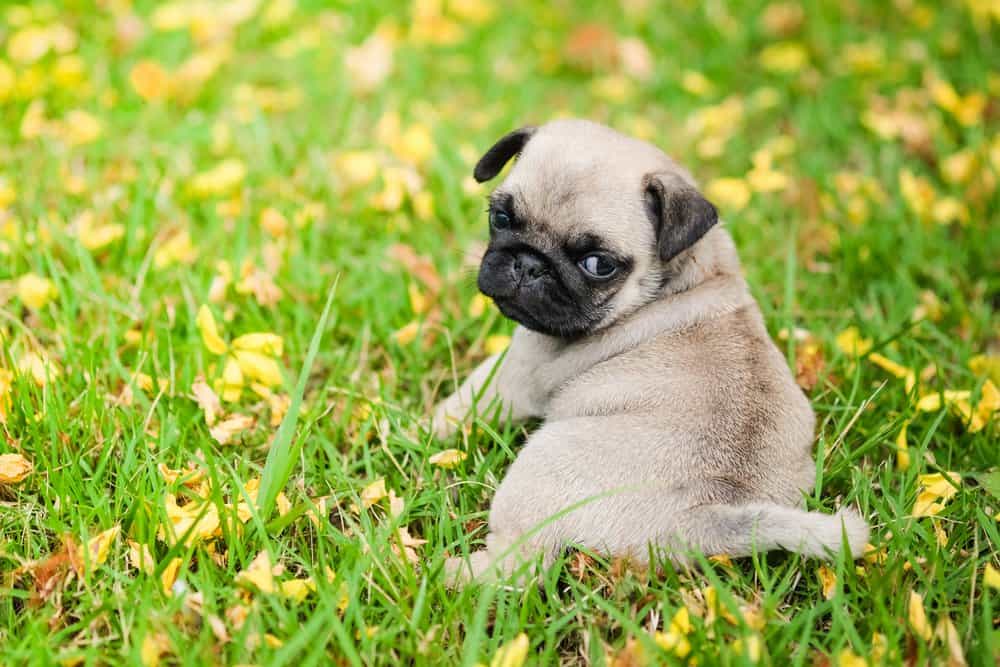Welcome to our comprehensive guide on pug progression, where you will find all the information you need about your pug’s growth chart, milestones, and training tips. As a pug owner, it is important to understand the developmental stages of your furry friend so that you can provide them with proper care and support throughout their life.
In this article, we will break down each stage of a pug’s progression from puppyhood to adulthood and highlight key milestones along the way. Additionally, we will provide valuable training tips that can help ensure your pug grows up happy and well-behaved. Whether you are a new or experienced pet owner, this guide has something for everyone who wants to give their beloved pugs the best possible start in life. So sit back, relax, and let us take you through an exciting journey to understanding everything there is to know about pug progression!
Pug Summary

Sure, the pug is a small breed of dog that originated in China and was later popularized in Europe. They are recognized for their distinctive wrinkles, short muzzle, and curled tail. Pugs are known to be friendly and sociable dogs that make great companions for families or individuals living in apartments.
In terms of size, pugs typically weigh between 14-18 pounds and stand about 10-12 inches tall at the shoulder. As puppies, they may experience rapid growth during their first year of life before leveling off as adults. It’s important to note that due to their flat faces, pugs can be prone to certain health issues, such as breathing difficulties or eye problems. By following these guidelines, pet owners will be able to ensure that their furry friends are meeting all the necessary developmental milestones for their age group. This includes tracking weight gain, monitoring teeth development, and providing ample opportunities for socialization. Overall though, if you’re looking for a lovable lapdog with plenty of personality, then the pug might just be the perfect pick for you!
Pug Progression: Growth and Weight Chart by Age
| Pug Age | Pug Weight |
|---|---|
| 1 month old | 1-2 pounds |
| 2 months old | 2-4 pounds |
| 3 months old | 4-7 pounds |
| 4 months old | 5-9 pounds |
| 5 months old | 7-10 pounds |
| 6 months old | 7-12 pouds |
| 7 months old | 9-12 pounds |
| 7-12 pounds | 11-14 pounds |
| 9 months old | 14-18 pounds |
| 10 months old | 14-18 pounds |
| 11 months old | 14-18 pounds |
| 12 months old | 14-18 pounds |
When Will My Pug Stop Growing?
One of the most common questions that pug owners ask is when their furry friend will stop growing. The answer to this question varies depending on a number of factors, including genetics, diet, and overall health.
On average, in normal pug progression, they tend to reach their full size and weight by the time they are one year old. However, some may continue to grow until they are closer to 18 months old. It’s important for owners to keep an eye on their pug’s growth rate during this time period and make sure that it falls within a healthy range.
How Big Will My Pug Be When Fully Grown?

Pugs are a small breed of dog that typically weigh between 14 and 18 pounds when fully grown. They usually stand about 10 to 13 inches tall at the shoulder. However, it’s important to note that there can be some variation in size depending on genetics and other factors. It’s also worth mentioning that pug puppies grow quite quickly in their first year of life, so it’s important to monitor their diet and exercise levels during this time to ensure they are growing at a healthy rate. If you’re looking for more specific information about your particular pug’s growth trajectory, consulting with a veterinarian or experienced breeder may be helpful.
The Biggest Pug Ever Recorded
Big Splash, a four-year-old pug, holds the title of being the largest pug ever recorded. Weighing in at an astonishing 28 pounds, which is significantly heavier than the average weight of a pug, Big Splash has captured the hearts of many with his larger-than-life personality and adorable features.
Originally adopted from a shelter by his loving humans in North Carolina, Big Splash has quickly become a local celebrity among fellow dog owners and admirers alike. Despite his size, this lovable pup is still very much a pug at heart – always eager to play and cuddle up with those who show him affection.
When Should My Pug Be Spayed or Neutered?

One of the most important decisions that pug owners must make for their furry friends is whether or not to spay or neuter them. Spaying and neutering refer to surgical procedures that remove a female pug’s ovaries and uterus or a male pug’s testicles, respectively.
There are several reasons why pet owners choose to spay or neuter their pugs. One of the primary reasons is population control – by getting your pug fixed, you help reduce the number of homeless pets in shelters. Additionally, spayed and neutered pets tend to have fewer health problems later in life, such as certain types of cancer.
But when should you schedule this procedure for your pug? Experts recommend waiting until your puppy is at least six months old before scheduling the surgery. This allows time for growth and development so that they can handle anesthesia better.
When Should My Pug Be House Broken?
House training, also known as potty training or toilet training, is an important aspect of raising a puppy and ensuring they become a well-behaved member of your family. It involves teaching your pug to eliminate outside and not inside the house.
The age at which a pug should be housebroken can vary depending on their individual development and learning abilities. On average, most puppies are able to control their bladder by around 12 weeks old. However, it’s important to note that some may take longer than others.
Consistency is key when it comes to potty training your Pug. Establishing a routine for taking them outside after meals, naps, playtime, and first thing in the morning will help them learn where they’re supposed to go potty. Additionally, positive reinforcement, such as treats or praise, can be used to encourage good behavior.
When Should My Pug Stop Eating Puppy Food?

Pugs are ready to eat adult food between 9-12 months old.
©Africa Studio/Shutterstock.com
As your pug grows, you may be wondering when it’s time to transition from puppy food to adult dog food. Generally, small breeds like pugs reach their full size and weight by between nine and twelve months of age. At this point, they can start transitioning to adult dog food.
However, it’s important to note that every pug is different and may have varying nutritional needs based on factors such as activity level and health conditions. It’s always a good idea to consult with your veterinarian before making any dietary changes for your pup.
When transitioning from puppy food to adult dog food, do so gradually over the course of about a week or two. Mix in increasing amounts of the new adult formula with decreasing amounts of the old puppy formula until your pug is solely eating the new formula.
It’s also important to choose a high-quality brand of adult dog food that meets all of your pug’s nutritional needs. Look for formulas that include protein sources like chicken or lamb, as well as healthy fats and carbohydrates.
Remember that proper nutrition is crucial for keeping your pug healthy throughout their life!
When Will My Pug Start Losing Teeth?

As a pug owner, it’s important to understand the natural progression of your pet’s growth and development. One milestone that you can expect in your pug’s early years is the loss of their baby teeth. Typically, pugs start losing their teeth at around four months old and will continue to lose them until they are six or seven months old.
During this time, it’s important to keep an eye on your pug’s dental health, as they may experience discomfort while teething. Providing them with chew toys or frozen treats can help alleviate any pain and encourage healthy chewing habits.
It’s also a good idea to start introducing tooth brushing into your pug’s daily routine during this stage of development. This will not only promote good oral hygiene but also help prepare them for regular dental check-ups later in life.
When Should I Start Training My Pug?

Pug puppies are eager to learn and fun to train.
©Ezzolo/Shutterstock.com
Training your pug should start as soon as you bring them home. Pugs are intelligent and eager to please, which makes them fairly easy to train. Early training is especially important for socialization purposes, as it helps prevent behavioral issues down the road. At age 16 weeks, they have the capacity to follow basic cues and really start learning fast!
Pugs can be stubborn at times and may require additional patience during training sessions. Positive reinforcement techniques such as treats or praise can help encourage desired behavior.
Overall, starting early and remaining consistent with your training efforts will ensure that your pug grows into a well-behaved and obedient companion.
What Cues Should I Teach My Pug First?

When it comes to training your pug, there are certain cues that you should prioritize teaching first. These foundational commands will not only make your life easier but also help establish a strong bond between you and your furry friend.
First and foremost, focus on teaching basic obedience cues such as “sit,” “stay,” and “come.” These commands will set the groundwork for more advanced training later on. It’s important to be patient with your pug during this process as they may require some repetition before fully grasping these concepts.
Additionally, consider teaching basic leash manners early on in the training process. This includes walking calmly beside you without pulling or tugging on the leash. Using positive reinforcement techniques such as treats or verbal praise can help encourage good behavior while discouraging bad habits.
Another cue that is helpful to teach early on is “leave it.” This command can prevent your curious pug from getting into potentially dangerous situations by deterring them from investigating something they shouldn’t be near.
Overall, focusing on these foundational cues in the beginning stages of training can set both you and your pug up for success down the road. Remember to always use positive reinforcement techniques and stay consistent with your training routine!
Ready to discover the top 10 cutest dog breeds in the entire world?
How about the fastest dogs, the largest dogs and those that are -- quite frankly -- just the kindest dogs on the planet? Each day, AZ Animals sends out lists just like this to our thousands of email subscribers. And the best part? It's FREE. Join today by entering your email below.
Thank you for reading! Have some feedback for us? Contact the AZ Animals editorial team.







